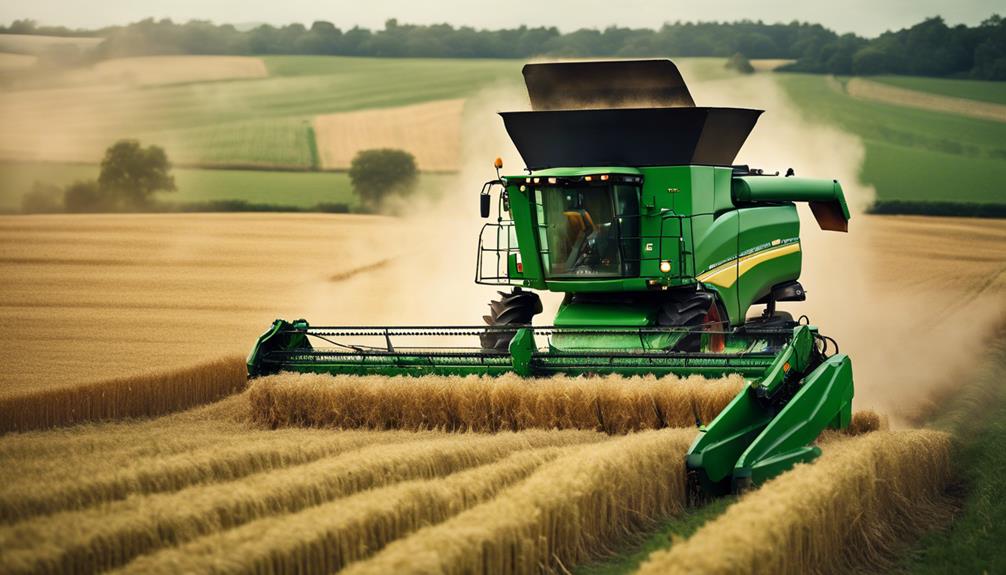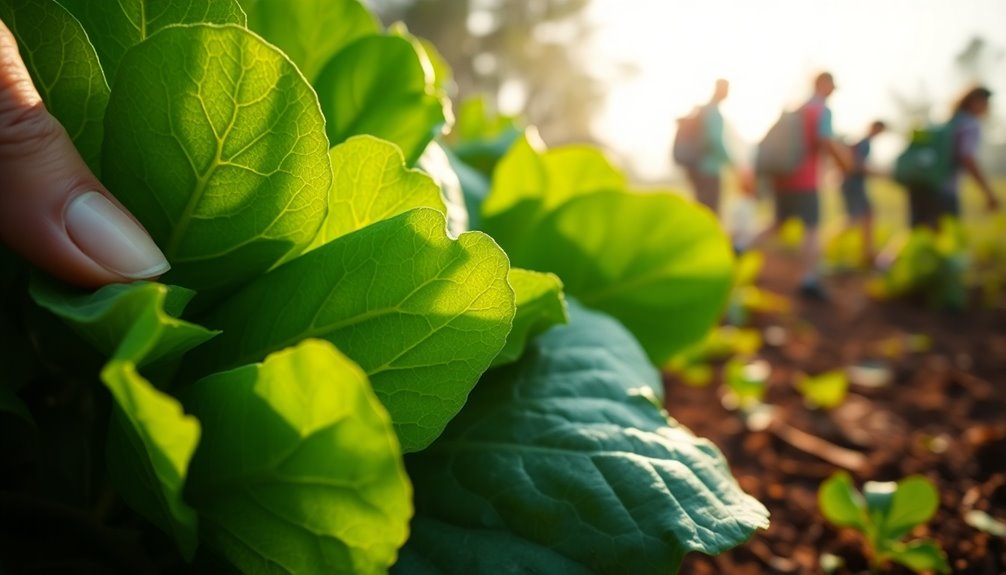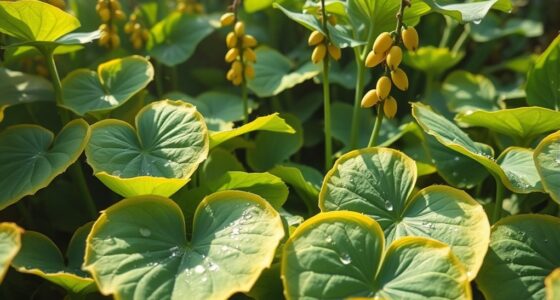Urban crabapples are an abundant and free food source that you can harvest responsibly from city parks and roadside trees. Beyond their tasty uses, you can extract natural pectin from them to make homemade jams and preserves, avoiding chemicals. This process empowers you with self-sufficiency and connects you to sustainable practices. By foraging and preserving with crabapples, you reclaim control over your food while respecting urban ecosystems—discover more ways to turn wild resources into nourishing treats.
Key Takeaways
- Urban foraging of crabapples offers free, sustainable food sources from city trees, promoting self-sufficiency and environmental stewardship.
- Harvesting responsibly ensures crabapple trees remain healthy and supports local ecosystems within urban landscapes.
- Crabapples naturally contain pectin, enabling homemade jam and jelly making without commercial additives.
- Extracting pectin from crabapples involves simple processes like chopping, simmering, and straining, enhancing culinary independence.
- Foraging and preserving crabapples symbolize reclaiming food sovereignty and connecting urban environments with nature’s resources.

Have you ever considered foraging for crabapples? These tiny, tart fruits grow abundantly in urban environments, waiting for someone like you to discover their hidden potential. Wild harvesting crabapples isn’t just about collecting fruit; it’s about reclaiming your power over food sources, reconnecting with nature, and creating something truly your own. When you gather crabapples from city parks, abandoned lots, or roadside trees, you’re engaging in a form of liberation from the commercial food system. You control what you harvest, how you use it, and how it nourishes you. This act of foraging becomes an empowering statement—an assertion that you don’t have to rely solely on grocery stores.
Once you’ve gathered enough crabapples, the next step is to harness their natural pectin. Pectin extraction is a straightforward process that allows you to transform wild-harvested fruit into a versatile ingredient. Pectin is the natural gelling agent that turns jams, jellies, and preserves into delightful, spreadable treats. Instead of buying commercial pectin, you take control by extracting it yourself, using simple methods that emphasize self-sufficiency. All you need is a pot, some water, and patience. You chop the crabapples, simmer them, and then strain out the pulp. The resulting liquid contains the pectin you need to set your preserves without added chemicals or additives. It’s a small act of independence that makes your homemade preserves stand out with pure, wild-crafted flavor.
Wild harvesting crabapples also means you’re tapping into a sustainable, free resource. These trees often grow in neglected corners, thriving without human intervention. By harvesting responsibly—taking only what you need—you help maintain the health of these wild groves and ensure others can benefit from the same bounty. This practice fosters a sense of connection and respect for the land, even in urban settings. Pectin extraction from wild crabapples is more than a culinary skill; it’s a reminder that nature provides if you’re willing to seek it out and work with it. It’s about reclaiming your food sovereignty, turning wild gifts into nourishing, homemade creations. Every jar you fill with crabapple jelly becomes a symbol of your independence and ability to forge your own path, even amid city chaos.
Frequently Asked Questions
Are Crabapples Safe to Eat Raw?
You shouldn’t eat crabapples raw because they can be quite tart and contain compounds that may cause stomach upset. Plus, poisonous lookalikes can be confusing, so proper identification is essential. To enjoy them safely, use preparation tips like cooking or making jelly, which breaks down harmful substances and releases pectin. Embrace foraging liberatingly—just be cautious and prepare crabapples properly to savor their natural goodness safely.
How Can I Identify Edible Crabapple Varieties?
To identify edible crabapple varieties, focus on crabapple tree identification features like small, rounded leaves, and clusters of bright, showy flowers in spring. Look for trees with smooth bark and fruit that’s tart but not bitter. Edible crabapple varieties often have crisp, juicy fruit perfect for jams and jellies. Trust your senses—smell, sight, and taste—and remember, proper identification empowers your foraging freedom.
What Are the Best Seasons for Foraging Crabapples?
You should forage for crabapples during late summer to early fall, typically from August to October, when the fruit reaches peak ripeness. Follow seasonal foraging tips by observing fruit color and firmness, which signal harvest timing. During this window, you’ll find the best crabapple harvest, revealing their tart flavor and pectin-rich potential. Embrace the liberation of foraging at the right time, and enjoy fresh, wild-made treats.
Can Crabapples Be Used in Savory Dishes?
Yes, crabapples can definitely be used in savory dishes. Their tart flavor profiles add a bright, tangy element to recipes like sauces, chutneys, and glazes. You can incorporate savory crabapple recipes into pork, chicken, or even roasted vegetables, creating a delicious contrast. Embrace the versatility of crabapples and experiment with their tangy zest to elevate your culinary creations—liberate your taste buds and enjoy the unique flavor they bring!
How Do I Store Crabapples After Harvesting?
To store crabapples after harvesting, start by selecting firm, unblemished fruit. Store them in a cool, dark place or in the refrigerator to preserve freshness and prevent spoilage. For long-term crabapple preservation, consider freezing or canning. Keep them in breathable containers like paper bags or crates to allow air circulation. Proper storing crabapples means you can enjoy their tart flavor whenever you want, giving you the freedom to experiment with their culinary uses.
Conclusion
So, seize the season and savor the sweet satisfaction of sustainable foraging. Crabapples’ charming charms challenge you to chase, choose, and cherish nature’s hidden harvests. With every foraged find, you foster a feeling of fulfillment and freedom, fueling your foodie fascination. Immerse yourself in the delightful, delicious world of urban foraging, and let the luscious, luscious pectin power transform your treats. Embrace the adventure—your urban orchard awaits!










